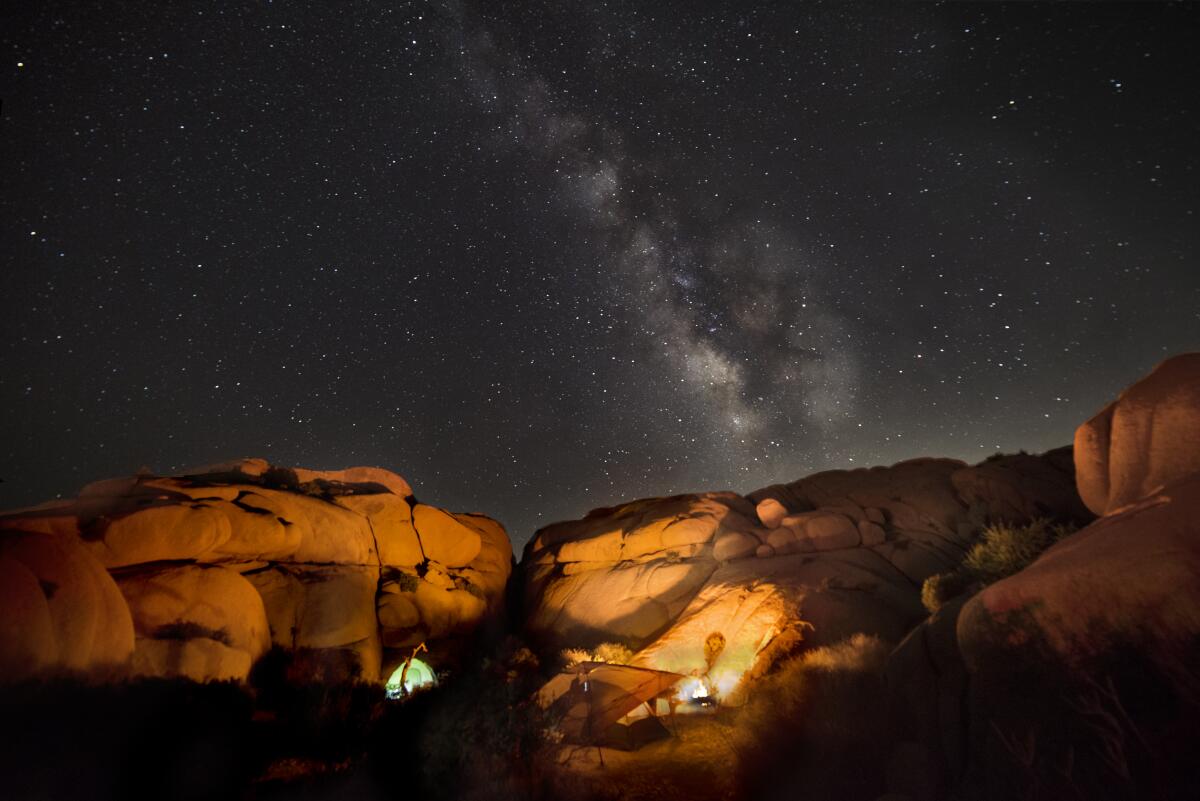
8 spectacular SoCal spots for viewing the Perseids meteor shower
Lights, camera, Perseids! It’s that time of year again: Summer’s biggest celestial blockbuster, the Perseids meteor shower, graces the night sky through about Aug. 24. The American Meteor Society forecasts that our planet will be audience to the densest display on Aug. 11 and 12.
The Perseids meteor shower is named after the constellation from which it radiates. (In Greek mythology, Perseus was a son of Zeus and the slayer of the gorgon Medusa.) And although you won’t have to worry about being turned to stone while gazing at the icy, rocky remnants of the comet Swift-Tuttle, other cosmic phenomena will challenge viewers during this year’s extraterrestrial event.
One of those phenomena is the final supermoon showcase of 2022. The Sturgeon Moon occurs as our lunar neighbor appears in full force, its orbit coming closest to our planet just before 7 tonight. There’s nothing wrong with an incredible opening act stealing the show, but it’s important to understand you may not get that perfect Perseids performance you’re hoping for. In recent years, you may have witnessed up to 100 meteors per hour, but this year’s conditions have brought an “mph” that might be familiar to Angelenos from rush hour: NASA clocks the year’s rate at 10 to 20 per hour or fewer. Still, why not revel in the uniqueness?
The early rise of the Sturgeon Moon offers an opportunity for a stellar evening escapade. Get out at sunset to start with a golden-hour romp under a striking, massive orange moon, a showstopper that dominates the twilight before your meteor hunt. The light may never truly dim, but it will surely keep you in awe as you search the sky for the dancing diamond debris — there’s fun in the challenge, after all. With that in mind, these are my favorite local spots (deserts, mountains, coast — oh my!) for the 2022 Perseids presentation. Or if you’d prefer to catch the event from the comfort of your sofa, you can also view it virtually.
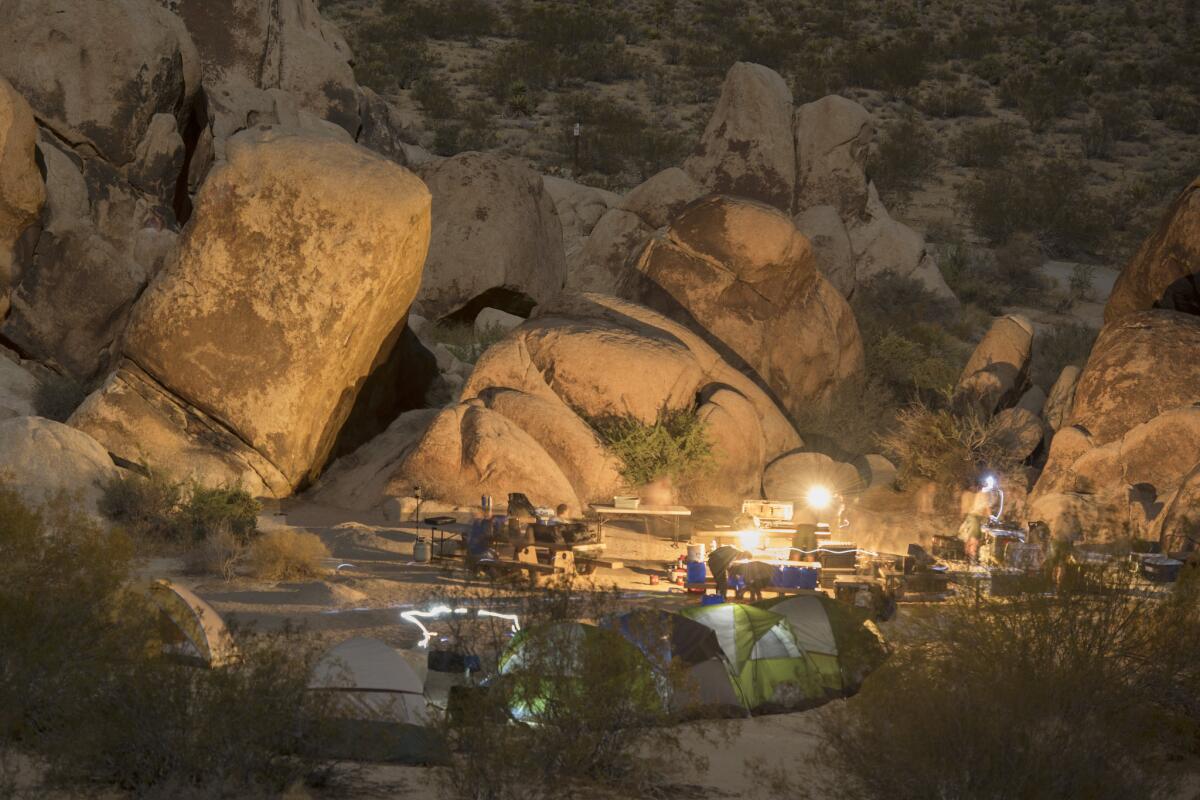
Indian Cove Campground, Joshua Tree National Park
How to get there: From the town of Joshua Tree, drive east on Highway 62 to the Joshua Tree National Park visitors center (near the intersection of 62 and Park Boulevard), then continue east another 9.2 miles on Highway 62. Turn right onto Indian Cove Road and continue 2.7 miles to the campground.
Parking: Paved lot. No dogs.

Mt. Disappointment, Angeles National Forest
How to get there: Drive 14 miles on the Angeles Crest Highway (California 2) from the 210 Freeway. Turn right onto Mt. Wilson/Red Box Road and continue 2.3 miles to the Eaton Saddle trailhead.
Parking: Two small dirt lots, free. Dog-friendly.
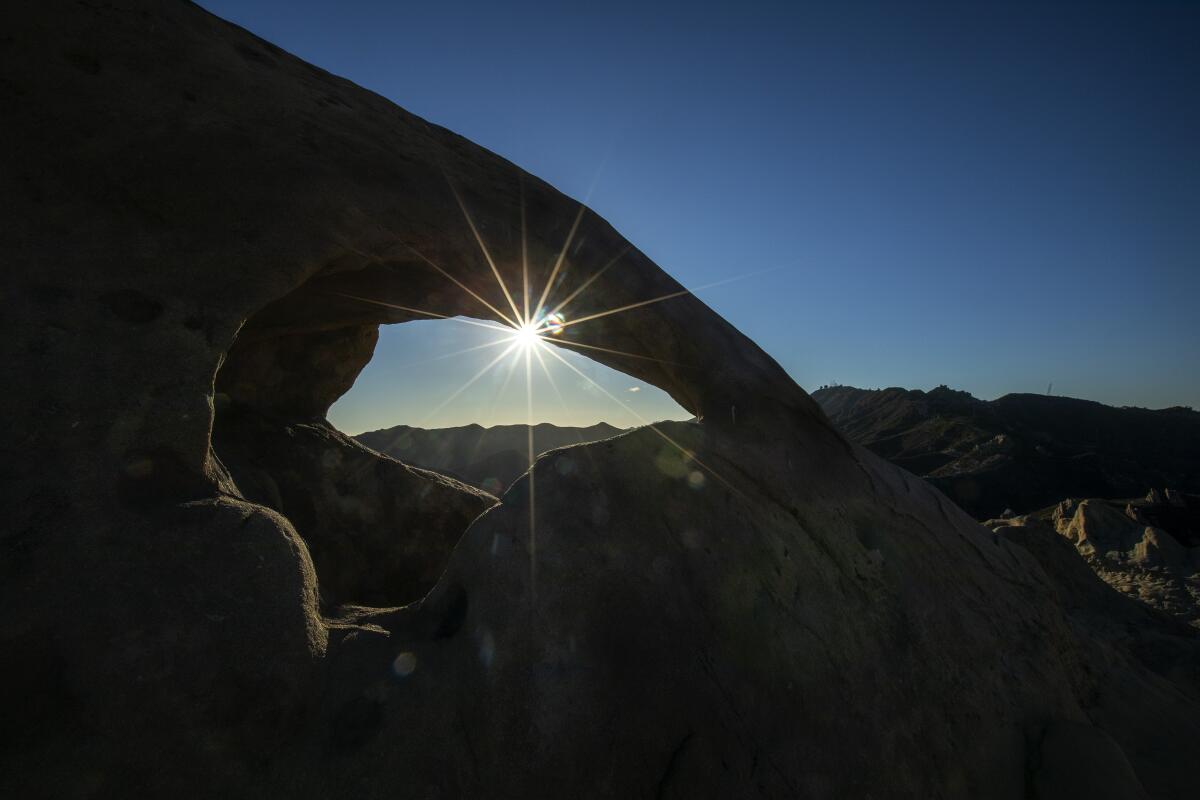
Castro Crest, Santa Monica Mountains
How to get there: From Pacific Coast Highway, take Corral Canyon Road for 12 miles north to the Corral Canyon trailhead.
Parking: Dirt lot, free. Dog-friendly.

Ojai
The law is aimed at reducing light pollution and energy bills and, ultimately, protecting those beautiful night sky views. This makes it the perfect accessible stargazing getaway for those who prefer to spend the early evening drinking local wine (perhaps at The Ojai Vineyard), perusing old novels (Bart’s Books) and exploring the boutique shops. Don’t forget to catch the famous “pink moment” along the Topa Topa bluffs at sunset. If you’re staying in town, grab a picnic table at Libbey Park (until 11 p.m.) or head a few miles east to Dennison Park, host to a charming campground ($20 per site) and darker skies. If you prefer to be more remote, head up the Maricopa Highway for a turnout in the Los Padres, including eight miles to the serene Wheeler Gorge Campground ($25 per night, 59 reserved sites, nine walk-in). Make it a star-cation!
How to get there: From the 101 Freeway, take the California 33 north and 150 east on Ojai Avenue, 3.5 miles from the town center.
Parking: Street park in a dark spot. Dog-friendly.
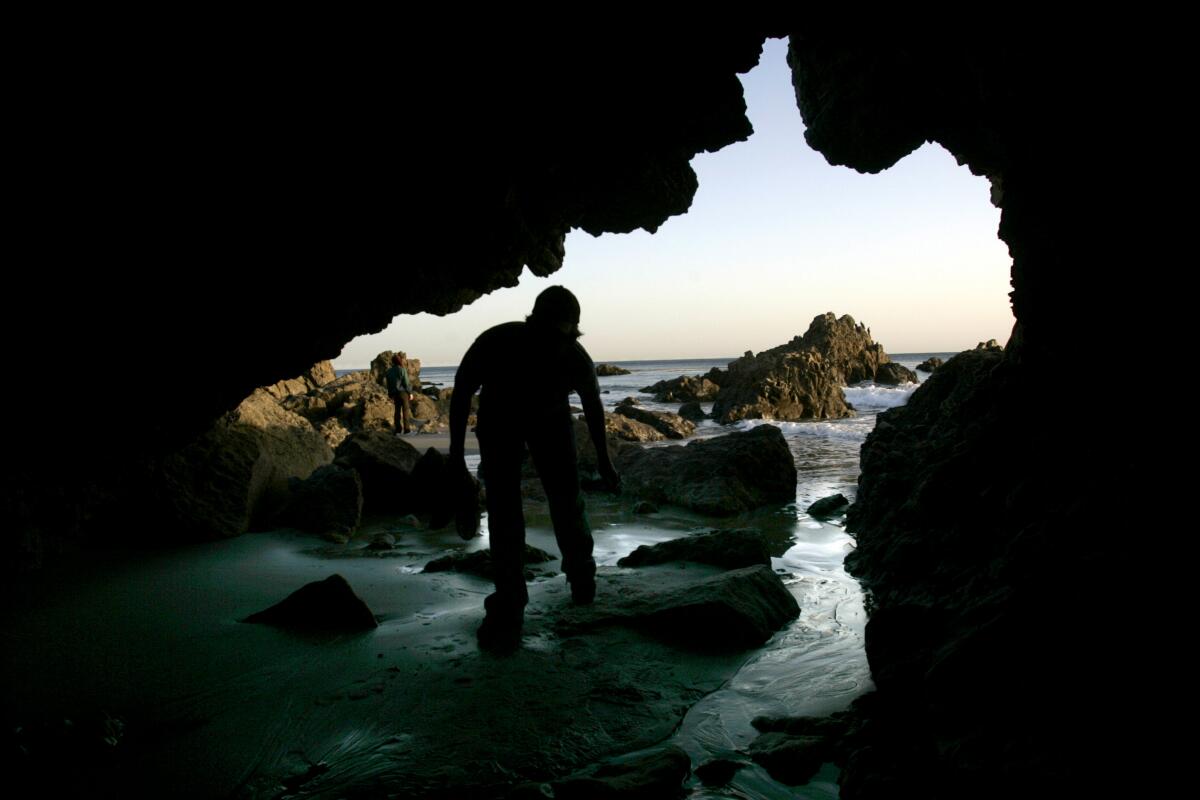
Leo Carrillo State Park, Santa Monica Mountains National Recreation Area
Set up before sunset to watch the tangerine blanket drape over the Pacific and have a chance to explore the rocky tide pools and sea caves. There is a campground for overnighters (135 reservable sites, $45 a night) and a backcountry trail (Camp 13 Trail at the eastern edge of campsite) that takes you 600 feet up for panoramic coastal vistas and an additional secluded spot to get starstruck. You can also drive up the campground-adjacent Mulholland Highway, which features a few pullouts for those that prefer a private drive-in star-watching experience.
How to get there: Take Pacific Coast Highway north (about 26 miles from the Santa Monica Pier).
Parking: Paved lot closes at 10 p.m.; $12; and street parking on Pacific Coast Highway. Dogs welcome in the day-use area, campgrounds and north of lifeguard tower 3 but not on trails.

Rancho Palos Verdes Overlook
This small, unassuming pullout serves as a panoramic daytime coastal view over the peninsula and is one of the only public stargazing spots available for late-night Perseids viewing. Rancho Palos Verdes has relatively lower light pollution compared to other coastal L.A. cities. However, the stars must align — and not be blocked by the marine layer that often shrouds the picturesque town. Come early for sunset vistas here and at Del Cerro Park, which often has official stargazing parties but otherwise closes one hour after sunset.
How to get there: The overlook is just west of the intersection of Hawthorne Boulevard and Vallon Drive.
Parking: Small, paved pullout lot, free. Dog-friendly.
Red Rock Canyon State Park
Known for its geological gems and colorful canyons, the 27,000-acre space is home to arguably the darkest skies within two hours of the bright urban jungle of downtown Los Angeles. On a clear day with no moon, visitors may be able to see the Andromeda galaxy with the naked eye.
There’s also a campground ($25 a night, 50 primitive sites, first-come, first-served) at 2,600 feet nestled against the vibrant cliffs, for those who don’t want to head home (and why would you?). In addition to the beautiful buttes, hypnotizing hoodoos and other riveting rock formations, the park has some interesting history too. Once home to Kawaiisu Native Americans, it’s been the setting of a 19th century mining operation and dramatic film backdrops, including the TV show “Lost In Space.” For day hikes, Nightmare Gulch Loop (moderate) and Ricardo Campground South Loop (beginner) trails are recommended. Look for roadrunners in these badlands too.
How to get there: Take the 5 Freeway and California 14 north. Turn left onto Abbott Drive and follow signs for the park.
Parking: Paved lot, $6 a day. Dogs allowed at campgrounds but not on trails.
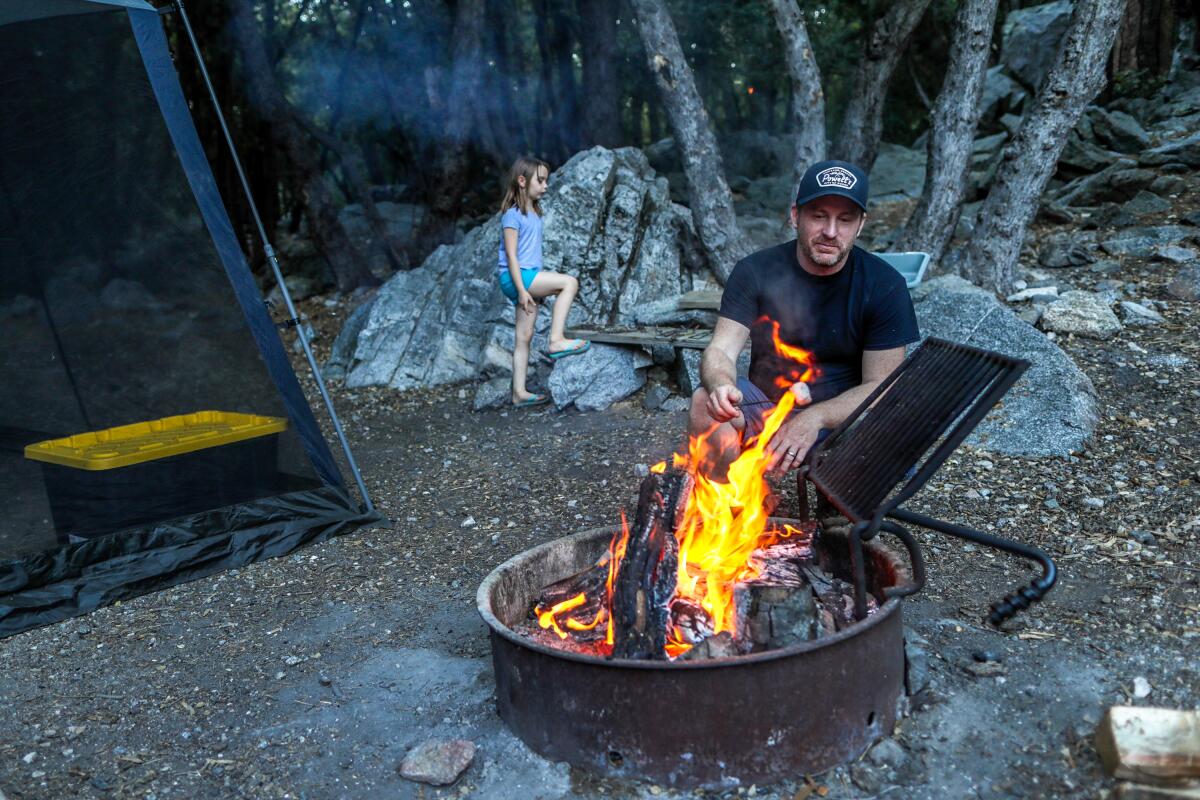
Crystal Lake Recreation Area and Campground, Angeles National Forest
If you want to stay the night, head down the road to the Crystal Lake Recreation Area Campground, home to an impressive 120 first-come, first-served sites ($12 a night or $10 with an Adventure Pass) located amid Jeffrey pines and oaks at 5,600 feet. Find the amphitheater for a nice seat during your stargazing visit. During the day, grab a bite at the Crystal Lake Cafe (breakfast burrito or Frito chili pie) and enjoy day treks to Mt. Hawkins and other peaks.
How to get there: Take the 210 Freeway to California 39 and drive north for 24 miles. Turn right onto Crystal Lake Road and follow signs for the lake and campground.
Parking: Paved lot, Adventure Pass required ($5 a day, $30 a year). Dog-friendly.
Sign up for This Evening's Big Stories
Catch up on the day with the 7 biggest L.A. Times stories in your inbox every weekday evening.
You may occasionally receive promotional content from the Los Angeles Times.



